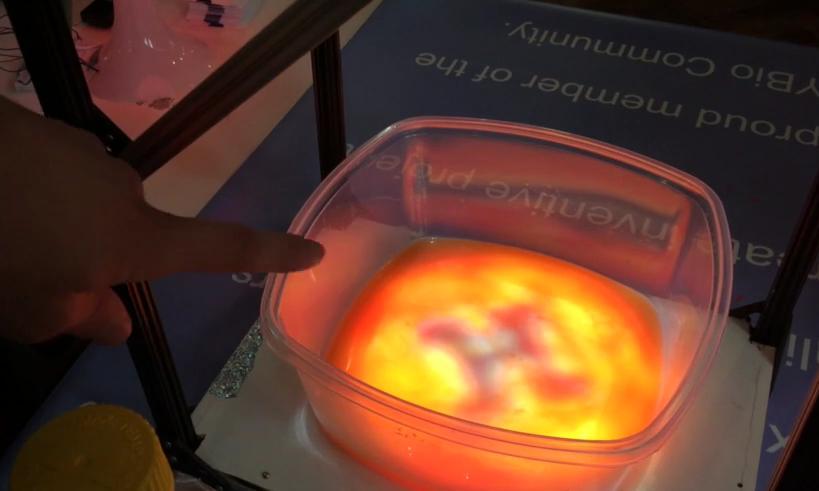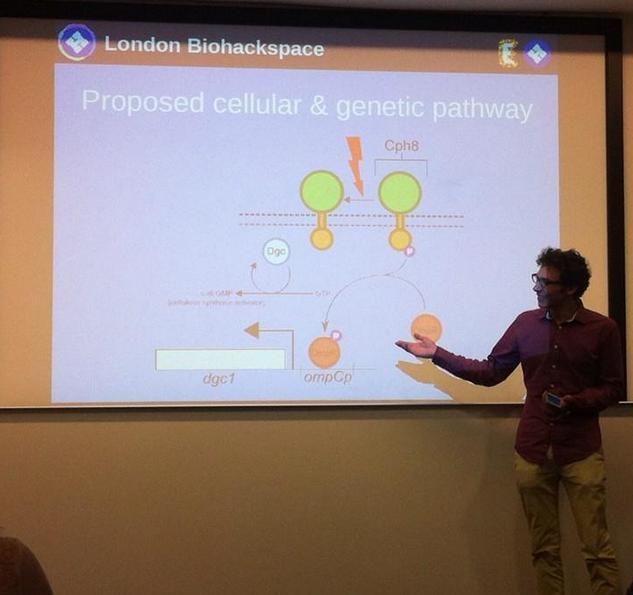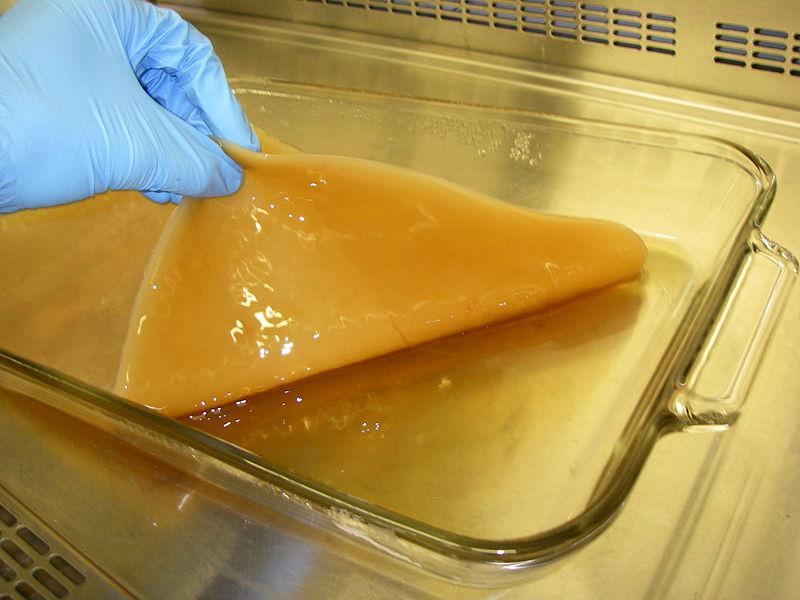JuicyPrint: 3D Printer Which Only Uses Fruit Juice, Bacteria & Light Could Have Huge Benefits Within Medicine
We have seen a lot of crazy, innovative, unique ideas emerge within the 3D printing space within the past year alone. When one speaks of 3D printing, they are no longer referring to traditional means of additive manufacturing. There are literally over a dozen different ways to fabricate 3-dimensional objects via machines that are additive in nature. This week at the Elephant & Castle Mini Maker Faire at the London College of Communication, a man named Ilya Levantis was on hand, showing off a 3D printer unlike anything we have ever seen or imagined before.
JuicyPrint is its name, and bacteria-cellulose printing is its game. JuicyPrint works by using genetically modified cellulose-producing bacteria, called Gluconacetobacter hansenii, which is capable of producing cellulose within various substances, including fruit juice, vinegar, tea, brewing waste, and other liquids.
The researchers at the London Biohackspace, led by Levantis, have created a genetically modified version of this particular strain of bacteria. This bacteria’s cellulose production is able to be turned on and off using light. The way in which the printing system works is very similar to resin based 3D printers such as Formlabs’ Form1+. These 3D printers use liquid polymer resins which are cured and hardened when exposed to ultraviolet light. To build up an object, the top layer of the resin is hit with either a laser or a DLP projector, and this process is repeated, layer by layer until the desired object is fabricated.
Juicy Print uses the same methodology, but rather than using a man-made polymer as the primary building block, it uses a natural biopolymer, in the form of bacterial cellulose.

Juicy Print (image source: Alasdair Allan)
“Naturally occurring G. hansenii will produce a cellulose ‘pancake’ along the surface of the liquid nutrients they are grown in,” explains members of the London Biohackspace via their website. “But when a pattern of light is shined on the surface of a liquid culture of our engineered strain, only the bacteria in the dark patches will make cellulose so we can make the cellulose pancake any shape we want.We can then push the patterned layer of cellulose below the surface and project a new pattern of light onto the culture. If we repeat this process a three dimensional structure will be built up out of the numerous patterned layers.”
So why exactly would anyone want to use bacteria to 3D print objects? Good question, but there is an equally good answer.
Bacterial cellulose, like that produced by this genetically modified bacteria, is an extremely pure substance that is also biocompatible and very strong. The uses for it as a material are really endless. It can be used in he creation of human tissue scaffolds, which can then be utilized in the harvesting of human organs, as well as the regeneration of diseased organs. It is also capable of being used in the fabrication of artificial blood vessels, in cases where arteries around the heart become hardened and clogged. Bacterial cellulose carries a much lower risk of blood clots than that of synthetic materials currently being used in artery bypass surgeries.

Juicy Print (image source: Alasdair Allan)
As for non-medical purposes, bacterial cellulose is also currently used in the production of extra strong paper products, and it has been shown to have a cholesterol lowering effect when put into certain food products. Other research is looking into how it can be used within the electronics industry, and plenty of other uses certainly remain on the horizon.
 One can imagine all of the potential that a 3D printer like this could have, not only on the biohacking community, but on society as a whole. Levantis tells Makezine that they have proven the system to work, but are still waiting for “paperwork” to be completed which will allow them to begin more experimentation within their lab. A working prototype is expected within the next six months. He also plans to leave this innovative 3D printing system as an open source technology, allowing others to build upon the idea, make improvements and hopefully create some groundbreaking uses for this incredible method of biohacking.
One can imagine all of the potential that a 3D printer like this could have, not only on the biohacking community, but on society as a whole. Levantis tells Makezine that they have proven the system to work, but are still waiting for “paperwork” to be completed which will allow them to begin more experimentation within their lab. A working prototype is expected within the next six months. He also plans to leave this innovative 3D printing system as an open source technology, allowing others to build upon the idea, make improvements and hopefully create some groundbreaking uses for this incredible method of biohacking.
What do you think? Will this lead to the creation of new materials, new products, and ultimately a better way of life? Discuss in the JuicyPrint forum thread on 3DPB.com. Check out the video below from Makezine.

Subscribe to Our Email Newsletter
Stay up-to-date on all the latest news from the 3D printing industry and receive information and offers from third party vendors.
Print Services
Upload your 3D Models and get them printed quickly and efficiently.
You May Also Like
Making Space: Stratasys Global Director of Aerospace & Defense Conrad Smith Discusses the Space Supply Chain Council
Of all the many verticals that have been significant additive manufacturing (AM) adopters, few have been more deeply influenced by the incorporation of AM into their workflows than the space...
EOS in India: AM’s Rising Star
EOS is doubling down on India. With a growing base of aerospace startups, new government policies, and a massive engineering workforce, India is quickly becoming one of the most important...
PostProcess CEO on Why the “Dirty Little Secret” of 3D Printing Can’t Be Ignored Anymore
If you’ve ever peeked behind the scenes of a 3D printing lab, you might have caught a glimpse of the post-processing room; maybe it’s messy, maybe hidden behind a mysterious...
Stratasys & Automation Intelligence Open North American Tooling Center in Flint
Stratasys has opened the North American Stratasys Tooling Center (NASTC) in Flint, Michigan, together with automation integrator and software firm Automation Intelligence. Stratasys wants the new center to help reduce...




































